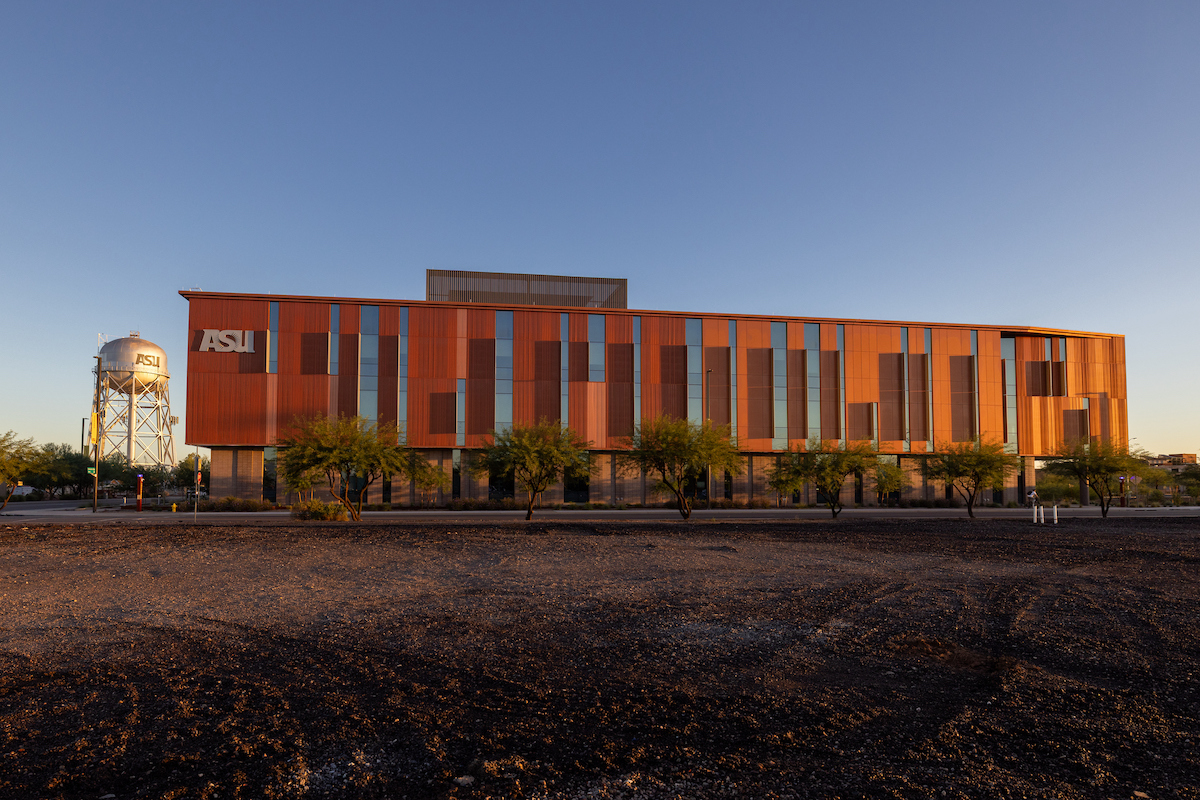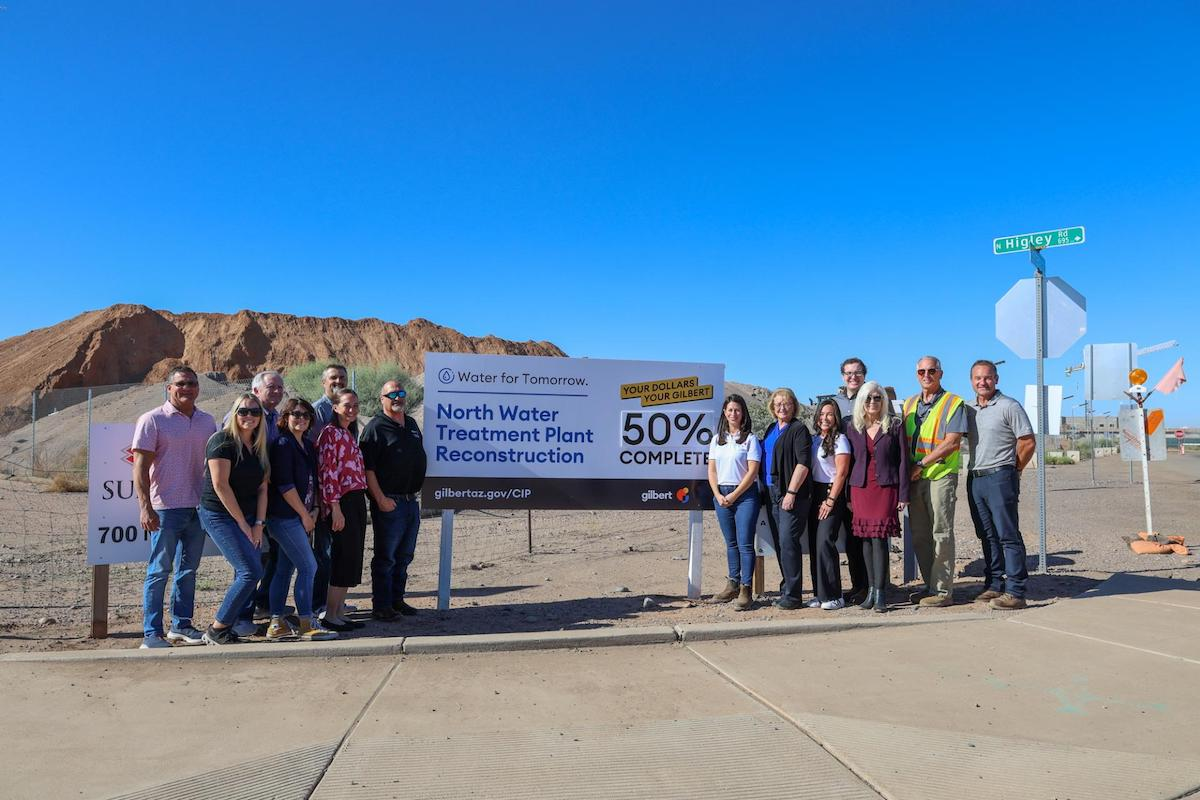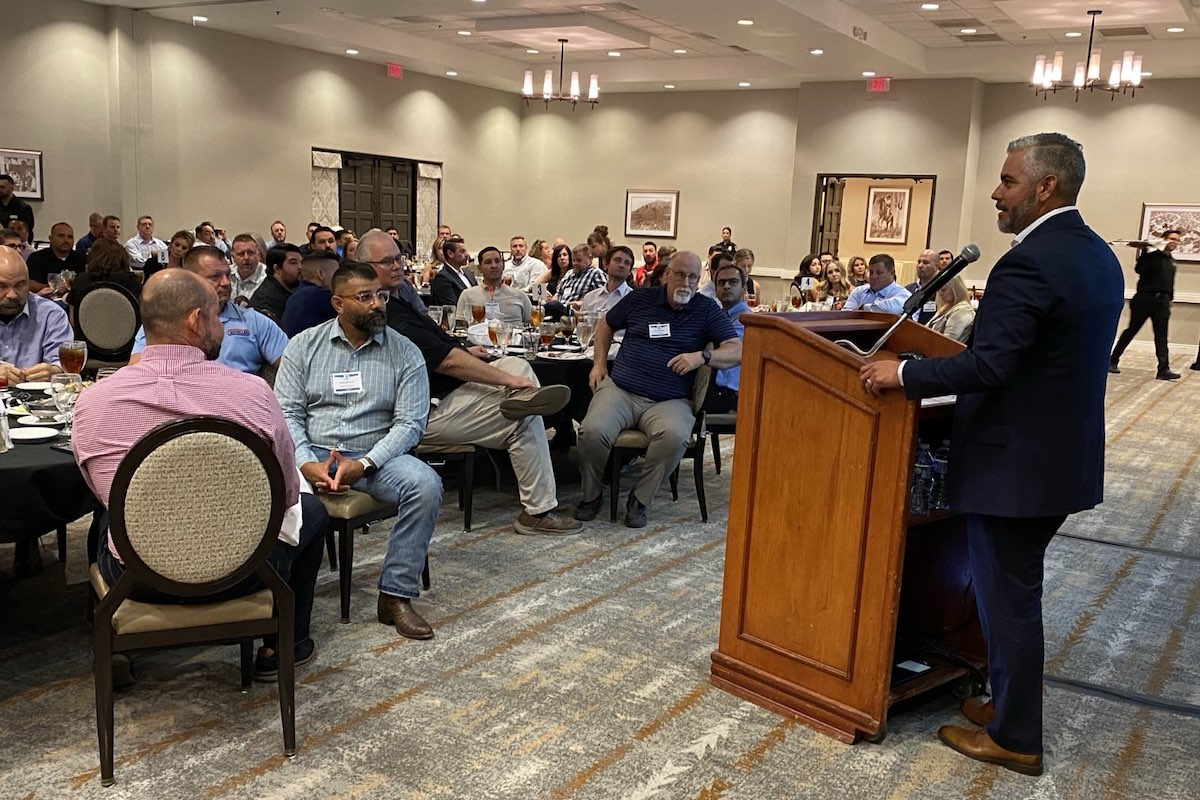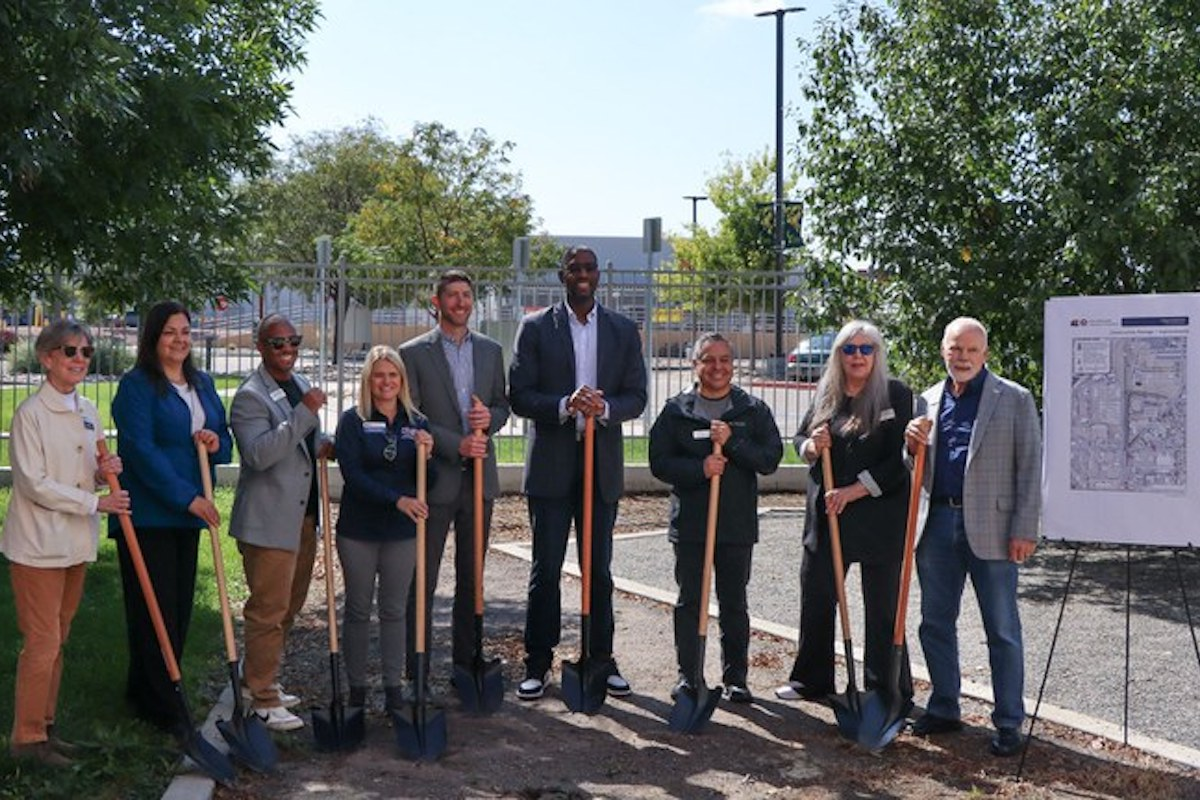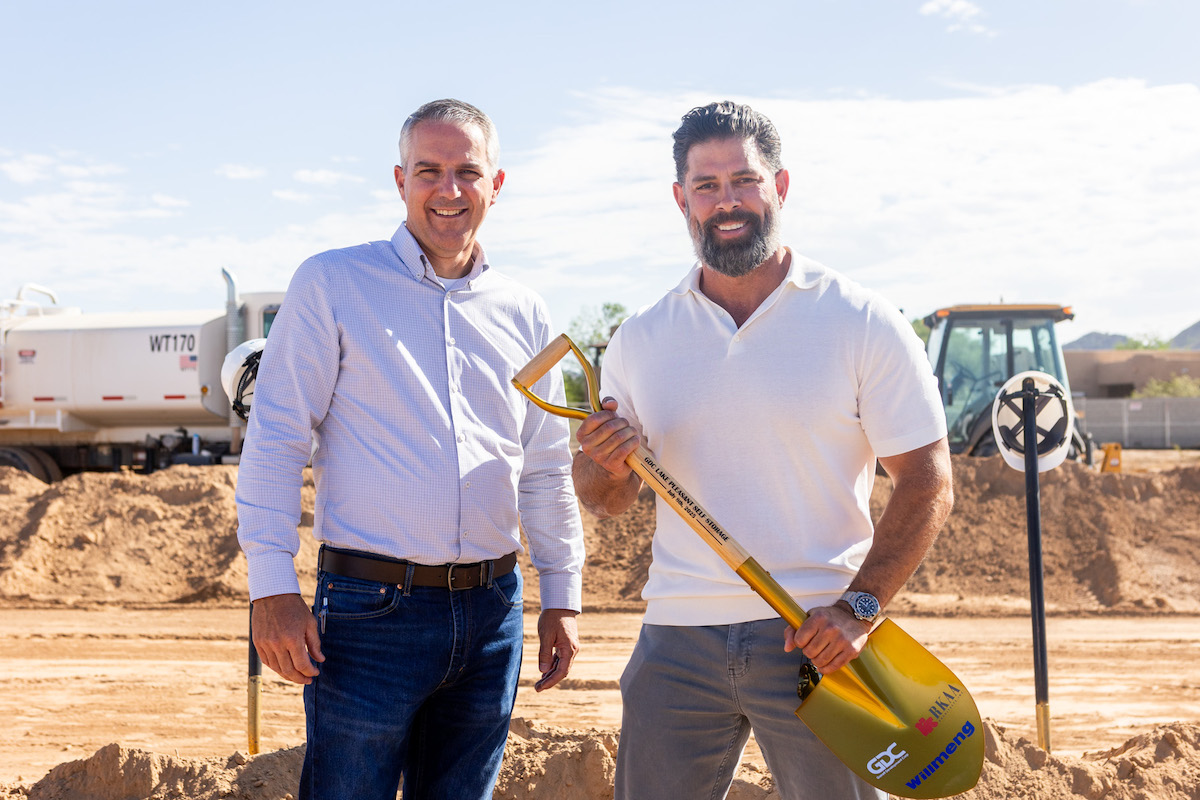Because of the complexities of the project, the City of Fort Worth utilized Construction Manager at Risk (CMAR) delivery. McCarthy Building Companies, Inc., of Dallas and their subcontractors finished the project ahead of schedule, despite the challenges of four active railroad tracks and tunnel construction through limestone with little overhead clearance.
Funded by the City of Fort Worth, the North Texas Council of Governments, the Texas Department of Transportation (TxDOT), and Tarrant County, the quarter-mile, multi-modal project strengthens connectivity and increases pedestrian and cyclist safety. A new tunnel with a four-lane roadway and 10-foot-wide shared-use paths extends Hemphill Street under I-30 and a new rail bridge. To enhance safety, the shared-use paths feature a guardrail and sit up to 3-1/2 feet higher than the adjacent roadway, with the tallest point in the middle.
In 2014, the city selected McCarthy as CMAR based on qualifications. McCarthy completed an early works package in 2015, but increasing construction costs and utility issues delayed the rest of the work. In 2017, once the city secured all the necessary funding, they agreed on a Guaranteed Maximum Price with McCarthy to complete the project. The success of this project led to consideration of CMAR delivery on other large Fort Worth projects with many variables or multiple stakeholders, said Michael Weiss, the city’s Project Manager.
For this project, “We were dealing with Union Pacific railroad tracks, investigating lots of utility within the right-of-way, and coordinating with TxDOT because we crossed under I-30 and some of their previously built bridges,” Weiss explained.

| Your local Trimble Construction Division dealer |
|---|
| SITECH Rocky Mountain |
| SITECH Northwest |
| SITECH Southwest |
Because of that, “There were a lot of unknowns and quite a bit of risk,” said Dave Wallace, P.E., McCarthy’s Project Director. “Getting us involved early in the design phase as the CMAR allowed us to really help mitigate the risks for the city. We were able to look at different methods and provide some value engineering and analysis on some of the construction techniques.”
McCarthy started the main construction in July 2017. In the midst of that work, “We had some unforeseen utilities that delayed the project about eight months, but we were able to accelerate and cut five months off that delay, so we finished ahead of our contractual obligation,” Wallace said.
The work required eight shutdowns of rail traffic – four to move the at-grade tracks out of the way of construction and four to move the track back onto each newly built bridge section.
“There simply wasn’t enough room to build the whole bridge and have the temporary tracks next to it,” Wallace said. “Our tightest section had about 18 feet between the bridge section we’d already built and the shoring for the temporary train track. We had a drill rig that could fit down there, but we had to start at one side and build our way out of the excavation because there wasn’t room to turn around or move to the side.”
For the second and third phases of the bridge, “We worked between live tracks – two on each side,” Wallace said. “When we set the first phase of bridge beams, we brought them in on a ramp off I-30. For the other phases, we had to lift from the north side across the tracks. We worked with a flagger from Union Pacific to make sure we had a window to set the beams in between trains coming through.”

| Your local Gomaco dealer |
|---|
| Faris Machinery |
| Tri-State Truck & Equipment Inc |
Throughout construction, “We had to clear off the tracks whenever a train came through,” Wallace added. “The Union Pacific flagger generally warned us 20 to 30 minutes in advance, then once the train got to the point where we needed to clear the track, he’d let us know. When we gave the OK, he’d give the train the OK to pass.”
For the limestone, McCarthy’s subcontractor brought in a 100,000-pound, 16-foot-tall road mining machine with 8-foot drums to grind up the rock. “We had to eat our way in, starting outside the bridge,” Wallace said. “The road mining machine included a conveyor system to shoot the rock off to the side, but it didn’t capture all the mined material. We brought our loaders in to remove the rest.”
With 12-foot-wide roadway lanes and the 10-foot-wide shared-use paths, “We had over 60 total feet of cut,” Wallace said. “The mining machine would cut a 10-foot swath, then slide over and continue excavating while we removed the material next to it.”
“They’re made of precast concrete block, similar to an MSE wall,” Wallace explained. “The only difference is they’ve got pockets with planting soil, bushes, and other plants. As the plants mature and grow, they’ll cover a lot of the concrete.”
As a result, “It’s quite aesthetically pleasing,” Roberts said. “Some of the plantings, like rosemary and other herbs, are even aromatic. We were able to create a multi-sensory experience for pedestrians and cyclists going through the tunnel.”

| Your local Volvo Construction Equipment dealer |
|---|
| Faris Machinery |
A public art piece entitled “Flight” by Dan Corson is scheduled for installation next year in the median at the north end of the tunnel. “It’s composed of about 20 sets of longhorns tied together by a wavy, metal center line,” Roberts said. “It will look like a stop-action photo of longhorns flying.”
To keep motorists safe, the LED lighting system mounted on the bridge beams features sensors at both entry points to the tunnel. “If you just came from a very bright space with sun in your eyes and then you enter a dark tunnel, your eyes wouldn’t have time to adjust,” Wallace explained. “Because the roadway curves, that would cause a safety issue. The lighting system is set up to be very bright during the day. At night, the lights dim a bit so you don’t go from the dark outside to a super bright space.”
Although the Hemphill Street Connector only covers a short distance, it provides many benefits for multiple modes of transportation.
















